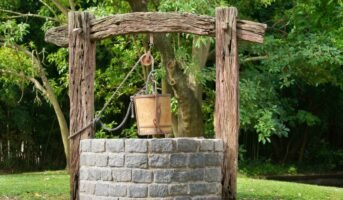Previously categorised as a sort of panicum grass, Echinochloa crus-galli is a wild grass species native to tropical Asia. Common names include cockspur (or cockspur grass), Japanese millet, water grass, and common barnyard grass.
The long, flat leaves of the plant, which can reach a height of 60″ (1.5 m), are frequently purple near the base. A few stems will spread across the ground, but most are upright. The base of the stems is concave.
Enormous millet-like seeds are crammed into dense spikelets in the characteristic seed heads, which are frequently reddish in colour.

Source: Pinterest
Echinochloa crus-galli: Key facts
| Botanical name | Echinochloa crus-galli |
| Type | Grass species |
| Leaf Type | Long leaves |
| Flower | Spikelets |
| Also known as | Common barnyard grass |
| Height | 50-100 cm tall |
| Season | It blooms all year long and can generate seeds in 60 days. |
| Sun Exposure | Moderate |
| Ideal Temperature | 24 degrees celsius |
| Soil Type | light (sandy), medium (loamy) and heavy (clay) soils and prefers well-drained soil. |
| Soil pH | Mildly acid, neutral and basic (mildly alkaline) |
| Basic requirements | Echinochloa crus-galli thrives in wastelands and direct-seeded rice fields. It prefers moist to somewhat wet terrain. It is a typical weed found in wetlands and other wet areas. |
| Ideal Location for placement | Wet places |
| Ideal season to grow | Summer |
| Maintenance | Low |
Echinochloa crus-galli: Environmental impact
One of the worst weeds in the world is the grass species E. crus-galli, which is listed in the Global Compendium of Weeds.
By absorbing up to 80% of the soil surface nitrogen, this organism has the potential to decrease crop yields and lead to the failure of fodder crops. In tropical and temperate countries, E. crus-galli has been identified as a problem in at least 36 other crops and is regarded as the worst plant in the world for rice paddies.
Due to its enhanced biochemical processes, improved morphological, invasive behaviour, allelopathic potential, and pesticide resistance, Echinochloa crus-galli is a hazardous plant. All of these elements are connected to the biology and ecology of the organism or exist at their confluence.
Livestock can be poisoned by the elevated amounts of nitrate it generates. In addition, it serves as a habitat for several mosaic viral infections. E. crus-galli is an invasive environmental weed that has spread to disturbed habitats, coastal forests, and native meadows.
Due to its rapid growth, ability to compete, and capability for rapid multiplication, it is a significant weed of lowland rice. In Java, the young leaves are consumed, and in Egypt, it is utilised to restore saline areas.
It possesses all the adaptive qualities and traits required for competition and survival in various climates and geographical settings. It is essential to manage E. crus-galli for optimal crop production. Reducing weed invasion in just about any crop requires prevention. Another crucial preventive measure that can aid in containing E. crus-galli in rice fields is clean cultivation.
Echinochloa crus-galli: Controlling this weed
Echinochloa crus-galli thrives in regions with 310 to 2500 mm of annual precipitation and 5.7 to 27.8 °C of yearly temperature variation (Duke, 1983). Even while it prefers average yearly temperatures around 14°C and 16°C, it can still flourish there.
Under field circumstances, several pathogens can be essential in suppressing E. crus-galli. More study is required to increase bioherbicides’ effectiveness in controlling noxious weeds like E. crus-galli. In recent times, allelopathy’s ecological and managerial importance in weed management has received widespread recognition and acceptance.
Cultural control: Despite wet or dry conditions, thorough ground preparation for rice helps reduce pests. Initially, it is challenging to tell the difference between rice and weed seedlings, which makes hand weeding challenging.
Biological control: Exserohilum monoceras, a fungus pathogen, has been found to suppress this weed biologically.

Source: Pinterest
Echinochloa crus-galli: What are the uses of this weed?
- The plant material is used to treat spleen problems.
- In Java, young shoots are consumed as a vegetable. Barnyard grass is a folk treatment in India for carbuncles, haemorrhages, sores, spleen issues, cancer, and wounds.
- It is said to be preventive and tonic.
- Cockspur can be utilised for soil reclamation but is typically seen as a weed in commercial crops such as rice or maize.
- Echinochloa crus-galli is frequently categorised as a small millet crop, just like other varieties in the Echinochloa genus.
FAQs
What is the common name of Echinochloa crus-galli?
Barnyard grass is the common name of Echinochloa crus-galli.
How do you control Echinochloa crus-galli?
Exserohilum monoceras, a fungal pathogen, has been demonstrated to suppress this weed.
Is barnyard grass poisonous?
Barnyard grass includes nitrates, which, if consumed in excessive quantities by horses, can cause nitrate poisoning. Even though this kind of poisoning is uncommon, it will have severe symptoms when it does happen.
Is barnyard grass edible?
The plant is usually a good feed for livestock, and the seeds are edible.
Housing News Desk is the news desk of leading online real estate portal, Housing.com. Housing News Desk focuses on a variety of topics such as real estate laws, taxes, current news, property trends, home loans, rentals, décor, green homes, home improvement, etc. The main objective of the news desk, is to cover the real estate sector from the perspective of providing information that is useful to the end-user.
Facebook: https://www.facebook.com/housing.com/
Twitter: https://twitter.com/Housing
Email: [email protected]











